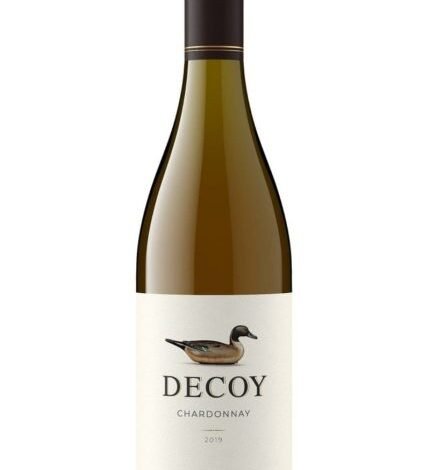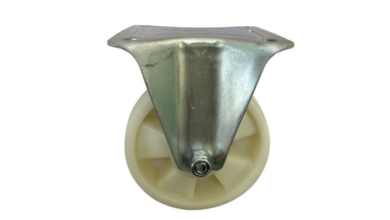Chardonnay Wine: The King of White Wines
Chardonnay Wine: The King of White Wines

Chardonnay, one of the most beloved and widely planted grape varieties in the world, has a reputation that spans the globe, with its wines gracing tables from Burgundy to Napa Valley, and beyond. Known for its versatility, Chardonnay can be made in a range of styles, from crisp, mineral-driven expressions to rich, full-bodied wines that showcase the grape’s potential for oak aging and complexity. In this article, we will delve into the origins, characteristics, growing regions, winemaking techniques, and tasting notes of Chardonnay, providing an in-depth look at why this grape is considered the “king” of white wines.
The Origins and History of Chardonnay
Chardonnay Wine’s story begins in the vineyards of Burgundy, France, where it is thought to have originated. It is believed to be a natural cross between two older varieties, Pinot Noir and Gouais Blanc. While the exact origins are debated, the village of Chardonnay in the Mâconnais region of Burgundy is often credited with the grape’s name. Its ability to adapt to various climates and soils, along with its neutral flavor profile, allowed it to spread quickly across France and later to other parts of the world.
Chardonnay first gained international fame in the late 20th century, with regions like California, Australia, and South America beginning to produce high-quality wines that rivaled those of Burgundy. Today, Chardonnay is the most widely planted white grape in the world, grown in nearly every wine-producing country.
Key Characteristics of Chardonnay Grapes
Chardonnay is known for its flexibility and ability to express the terroir (the combination of soil, climate, and topography) of the region in which it is grown. While the grape itself has relatively neutral flavor characteristics, its adaptability means that Chardonnay wines can be as diverse as the regions in which they are produced.
- Cool Climate vs. Warm Climate Chardonnay: In cooler climates, such as Burgundy’s Chablis region or the Sonoma Coast in California, Chardonnay tends to have a leaner profile with higher acidity. These wines often feature crisp flavors of green apple, lemon, lime, and sometimes mineral or flinty notes that reflect the terroir. On the other hand, in warmer climates, such as Napa Valley or Australia’s Margaret River, Chardonnay tends to be richer, more full-bodied, with tropical fruit flavors like pineapple, peach, and melon. These wines can have a softer mouthfeel due to the increased sugar levels in the grapes, which translate into a higher alcohol content.
- Neutral to Bold Flavors: Chardonnay’s inherent neutrality allows it to take on the flavors and textures imparted by winemaking techniques, including oak aging, malolactic fermentation, and lees contact. As a result, Chardonnay wines can range from light and crisp to rich and buttery, depending on the winemaking decisions made.
Famous Chardonnay Growing Regions
Although Chardonnay is grown in many wine regions around the world, certain areas are renowned for producing exceptional wines that highlight the grape’s range and adaptability.
Burgundy, France
Burgundy is the ancestral home of Chardonnay and remains the benchmark for high-quality examples of the variety. The cool, continental climate of Burgundy is ideal for producing wines with balance and acidity, allowing Chardonnay to develop its full expression. Some of the most prestigious Chardonnay wines in the world come from this region.
- Chablis: Located in the northernmost part of Burgundy, Chablis produces wines that are known for their crisp acidity and mineral character. Chablis wines are typically unoaked or lightly oaked, allowing the grape’s natural freshness and flintiness to shine through. These wines are often described as having flavors of green apple, lemon, and wet stone, making them incredibly refreshing.
- Côte de Beaune: The Côte de Beaune subregion of Burgundy is home to some of the finest and most complex Chardonnays in the world. This area includes renowned villages like Meursault, Puligny-Montrachet, and Chassagne-Montrachet. These wines are often fuller-bodied, with richer textures, thanks to oak aging and malolactic fermentation. Expect flavors of butter, hazelnut, and stone fruit, with a creamy, smooth mouthfeel.
- Mâconnais: The Mâconnais region, located further south in Burgundy, produces Chardonnay wines that are lighter and more accessible than their Côte de Beaune counterparts. These wines tend to showcase bright, fresh fruit flavors like citrus and melon, and are often enjoyed young. Wines labeled Mâcon-Villages or Pouilly-Fuissé are particularly well-known from this area.
California, USA
California has emerged as one of the key players in the global Chardonnay market, producing wines in a variety of styles, from lean and crisp to rich and oaky. The state’s diverse climate, with its combination of cool coastal influences and warmer inland regions, allows for the production of a wide range of Chardonnay expressions.
- Sonoma Coast: The cooler climate of the Sonoma Coast is ideal for producing fresh, vibrant Chardonnay wines with high acidity and citrus-driven flavors. These wines often feature notes of green apple, lemon, and a subtle minerality, with some showing hints of salinity from the proximity to the Pacific Ocean.
- Napa Valley: Napa Valley, with its warmer climate, produces more full-bodied and fruit-forward Chardonnay. These wines are often aged in oak, resulting in rich, creamy textures and flavors of tropical fruit (pineapple, mango), vanilla, and butter. Napa Valley Chardonnays are known for their smooth, round mouthfeel and can be quite opulent in style.
Australia
Australia is another country that has embraced Chardonnay, with key growing regions such as Margaret River, Yarra Valley, and Adelaide Hills producing exceptional examples of this varietal.
- Margaret River: Located in Western Australia, Margaret River produces Chardonnay wines that are known for their balance and elegance. These wines often showcase ripe fruit flavors of peach, melon, and citrus, along with a restrained use of oak that imparts subtle flavors of vanilla and toast.
- Yarra Valley: The Yarra Valley, near Melbourne, is a cool-climate region that produces Chardonnay wines with bright acidity and a fresh, crisp profile. These wines tend to feature flavors of green apple, lemon zest, and stone fruit, with a touch of oak to add complexity.
Other Notable Regions
Chardonnay is also grown extensively in regions such as South Africa, Chile, New Zealand, and Argentina, each offering its unique take on the grape. New Zealand’s cooler climates produce Chardonnays with vibrant acidity and citrus notes, while South American countries like Argentina and Chile produce wines with ripe, tropical fruit profiles.
Winemaking Techniques for Chardonnay
The key to making great Chardonnay lies in the hands of the winemaker, and the variety lends itself to various techniques that influence its final expression. Some of the most important winemaking decisions include:
- Oak Aging: Many high-quality Chardonnays are fermented or aged in oak barrels, which impart flavors of vanilla, toast, and spice to the wine. The use of oak also enhances the wine’s texture, creating a creamy mouthfeel. The level of oak influence varies, with some wines undergoing 100% oak aging (which imparts more flavor) and others being aged in neutral oak (which adds texture without overt flavors).
- Malolactic Fermentation: A common practice for Chardonnay, malolactic fermentation softens the wine’s natural acidity by converting malic acid (found in green apples) into lactic acid (found in milk). This process can impart a buttery or creamy quality to the wine and is often associated with the richer, fuller styles of Chardonnay.
- Lees Aging: Many premium Chardonnay Wine undergo aging on their lees, which are the dead yeast cells left over after fermentation. This practice adds complexity and texture, contributing flavors of brioche, bread dough, and hazelnut, while also enhancing the wine’s mouthfeel.
Tasting Notes of Chardonnay
Chardonnay is a wine of contrasts, and the flavors and aromas vary widely depending on the region and winemaking practices. Broadly speaking, Chardonnay can be categorized into two main styles:
- Crisp and Refreshing: These wines are typically produced in cooler climates and are characterized by bright acidity and flavors of citrus, green apple, and sometimes mineral or flinty notes. The finish is often clean and refreshing, making these wines a perfect match for seafood, shellfish, and light dishes.
- Rich and Full-Bodied: Wines made in warmer climates or those that undergo extensive oak aging tend to be fuller-bodied, with flavors of tropical fruit, butter, vanilla, and toasted nuts. The texture is often creamy and smooth, making these wines an excellent pairing with richer dishes like roasted chicken, lobster with butter, or creamy pasta.
Food Pairing with Chardonnay
Chardonnay’s versatility extends to food pairing. The wine’s diverse range of flavors allows it to complement a wide variety of dishes:
- Crisp Chardonnays: These wines pair well with seafood, shellfish, and salads. Try them with oysters, shrimp cocktails, or a fresh citrus salad.
- More:Shop
- **Rich

